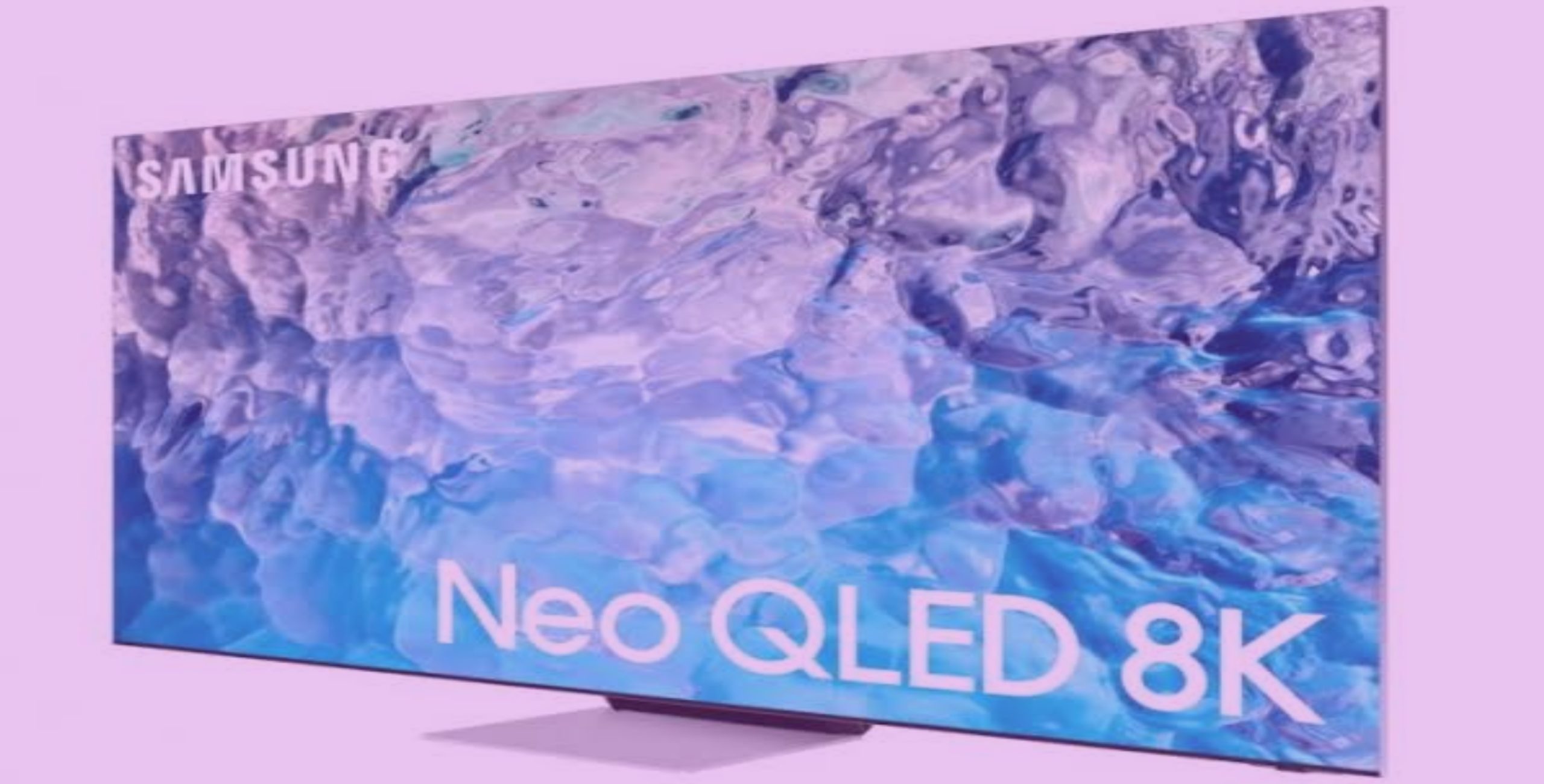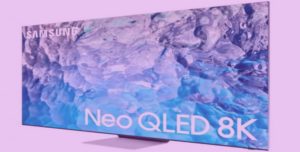Currently, the TV has an ECO-friendly solar-powered battery remote that is furnished with a solar panel at its back. Which is different from traditional disposable batteries.
Samsung Electronics has uncovered its most current line-up of customer electronics for the East African market. The crème of the collection of electronics Samsung has released is the 2022 Neo QLED TV. It comes with an ECO-friendly solar-powered cell remote that is fitted with a solar panel at its back, unlike the traditional disposable batteries.
“With this recent lineup, Samsung strives to redefine the function of consumer electronics. Through, creating beautifully designed, cutting-edge technology that provides functionality as well as aesthetics. This year’s Neo QLED TV for instance comes with features that take the screen to the next level. By offering a central hub to connect, work, play, and more” said Samsung Managing Director Mr. TS Lee.
The peak of the unveiling occasion was the 2022 Neo QLED 8K. Which has been upgraded to take the substantial screen experience to a new height. Its main component is the Neural Quantum Processor 8K. The modern processor has 20 autonomous neural AI networks. Each examines the characteristics of the content and the picture quality for optimal viewing, the source notwithstanding.
The processor similarly inspects the screen and maximizes contrast with the background. By improving the object without processing the background. It operates in the same way human eyes see images in actual life. Hence, the object on the screen stands out against the background.
The Samsung 2022 QLED TV got the world’s first ‘Pantone Validated’ certification in the exhibit from Pantone. The international authority on color and creator of the Pantone Matching System (PMS). Meaning that the models authentically generate over 2,000 colors, in addition to the recently added 110 skin tone shades seen in Pantone’s guidelines.
Besides, the stunning colors are safe to watch with the modern EyeComfort Mode. The feature utilizes AI technology to automatically adjust both the brightness as well as the color temperature of the screen. Depending on either the light or darkness in the room in addition to the sunset/sunrise information. To optimize the best viewing experience.
The 2022 Line up of TVs (that includes the Crystal UHD TV range) has a solar cell remote that has been upgraded for 2022. It is 88% more yielding than the last 2020 models and is currently battery-free. It can also be powered through 2.4GHz radio frequency harvesting.
“This Samsung TV has been chosen as the world’s best TV for 16 consecutive years now. And this is something that we boast of. There is a reasonable amount of time and investment that is involved in the research and development for each unit we unveil. And the 2022 Neo QLED TV isn’t an exception. I can guarantee you that this is the television, each Kenyan would need in their homes,” Samsung’s Head of Consumer Electronics Division Mr. Sam Odhiambo noted.
Similarly, Samsung unveiled additional products such as the Freestyle, a portable smart screen with an ambient lighting device. Furthermore, the 2022 Samsung Frame TV was exhibited at the event with the highlight being its capacity to change into a piece of wall art when turned off.
OLED Tvs FAQs
Here are the frequently asked questions about OLED Tvs, according to the Spencers Tvs:
What does OLED TV mean?
As an acronym, OLED stands for organic light-emitting diodes about diodes that are capable of emitting light. As far as performance goes, OLED means users can enjoy entertainment at more immersive levels with pixel control that displays 4K at the best quality.
What is an OLED TV?
By definition, OLED TVs contain over 8 million pixels, each capable of independently producing light when an electrical current is passed through. By contrast, LED, LCD, and QLED televisions use a backlight to illuminate pixels. By working individually, the OLED pixels can deliver the quickest response rates and improved image quality.
Since OLED models don’t require the same backlighting as QLED or LCD counterparts do, they are also thinner and lighter than their counterparts.
What’s the difference between OLED and QLED?
Unlike OLED TVs, which are capable of casting light pixel-by-pixel, QLED TVs use backlighting which passes through a special filter that displays a quantum dot color spectrum. This process creates dimming zones which, in normal circumstances, are used to block out light or light up when programmed to. However, one of the common concerns of QLED televisions is image bleeding, also known as blooming.
This happens when adjacent illuminated zones transfer light into dimmed zones, blurring the edge between dark and light images. Since OLED televisions operate on a more molecular level, the amount of bleeding is virtually non-existent, meaning viewers will enjoy cleaner lines and enhanced contrast between black and colored images. Additionally, this also allows OLED TVs to be more energy-efficient.
Is an OLED TV worth buying?
If you find yourself wondering why OLED TVs are better than other televisions on the market, the answer can be summed up in three factors:
Unmatched black display
The quickest pixel response time
Vivid colors
While first-generation OLED TVs suffered from impaired image brightness compared to LED TVs, including QLED models, newer OLED options feature improved image brightness that is essentially as good as the competition.
Currently, manufacturers are unable to make OLED panels keep up with the demand, meaning they tend to be pricier. However, with new technology being developed from several names, industry leaders are expected to roll out more budget-friendly options soon.
Who makes the best OLED TV?
Fun fact: LG is the only manufacturer of OLED television panels in the industry. That means while competitors, like Sony, may carry a catalog of OLED TVs, their products are using LG screen technology.
Currently, LG is the leader in OLED TVs, while Sony is also a considerable competitor. Samsung currently only carries QLED TVs but has announced production of LCD and QLED televisions will stop by the end of 2021 in exchange for their newest TV lineup that uses both quantum dots and organic diodes.
Ultimately, which OLED manufacturer is superior depends on what a buyer is searching for. Generally, shoppers have shown to care most about these common factors when shopping for an OLED TV:
- Best OLED TVs for brightness: LG
- Best OLED TVs for contrast: LG
- Best OLED TVs for sports: LG followed by Sony
- Best OLED TVs for movies: Sony followed by LG (also see Best TVs for Movies)
- Best OLED TVs for gaming: LG with an honorable mention for Samsung QLED TVs (Note: QLED TVs will not have the same quick response rate as an OLED TV)
OLED vs. 4K: Which is better?
It’s easy to group industry terms such as 4K and OLED into the same category, but the reality is there is no such thing as OLED vs 4K.
There is a difference between 4K and OLED, and that is:
- 4K televisions are categorized by their resolution; 3840 x 2160 pixels running horizontally and vertically, respectively.
- OLED technology uses a television’s pixels to display images.
- While 4K televisions are still a popular choice, OLED TVs with 4K resolution offers nearly unparalleled image display suitable for all sorts of media, including gameplay, streaming, or movie watching.
Is OLED better than plasma?
If it’s been a while since your last television purchase, chances are your current TV might be plasma. However, in 2014, industry leaders LG, Samsung, and Panasonic all effectively put an end to the series in exchange for emerging LCD (liquid crystal display) technology.
At the time, plasma televisions boasted improved contrast ratios and colors, with rapid response rates and better viewability from wide angles. However, plasma TVs were only capable of delivering a range of resolutions between 1,024 x 768 on smaller screens and up to 1920 x 1080 on larger screens.
When it comes to plasma versus OLED, the latter can provide superior pixel control, which means every pixel is sharper, brighter, and more vivid than the plasma image display.
How do I clean my OLED TV screen?
It’s important to understand how to clean an OLED screen since failure to do so correctly could permanently damage the panel. That’s because the surface uses a proactive film which can damage if cleaned using corrosive chemicals, alcohol, or thinners.
When possible, the best solution to clean an OLED screen is simply water.
Here’s what you should do:
- Begin by disconnecting the TV (better safe than sorry).
- Next, pass over the surface with a dry microfiber cloth to capture dust and debris.
- Once dusted, run a microfiber cloth under water and wring it thoroughly.
- Then, wipe the surface and follow with a dry cloth.
For stubborn messes, manufacturers recommend creating a solution using half water and half white vinegar. Pour into a spray bottle. Never spray any solution onto an OLED screen; instead, squirt some onto a microfiber cloth and follow steps 2 through 4 above.
Can an OLED TV be laid flat?
The only time an OLED TV should be flat is when it is in its original packaging supported by foam. Manufacturers recommend leaving the TV inside the box until it’s ready for installation.
If an OLED TV is placed flat without support or protection, the screen is subject to compromised support in the center, which can place strain on the corners and edges, potentially cracking or damaging the screen.
Always lift and support an OLED upright. If the television set has been removed before installation is ready and there are no feet to hold it, consider using a sofa or similar soft surface to hold the set upright until it can be properly installed.
Now you have all the information you need about the 2022 Neo QLED TV and the answers to the frequently asked questions about OLED TVs.



